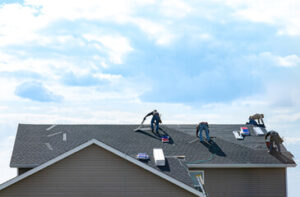An implant acts as an artificial tooth root, helping to keep surrounding teeth from shifting toward the gap and preventing bone loss. The metal implant post is surrounded by the jawbone, which grows around it to anchor it in place.
Before placing a dental implant, we will perform a full evaluation and consider your overall health. This includes examining the soft tissues and determining whether you need a bone graft. Contact Implant Dentist Las Vegas now!

Dental implants are an excellent option for people with one or more teeth. They can restore your smile and help you eat, speak, and chew comfortably again. Unlike dentures, which need to be replaced periodically, dental implants are a permanent solution for missing teeth.
During your initial consultation, the implant dentist will discuss whether you are a good candidate for dental implants. This will include a comprehensive dental exam, including dental X-rays and 3D images of your teeth and jaw. The implant dentist will also review your medical history to ensure you are healthy for surgery. They will also recommend any additional treatments that may be necessary, such as gum disease treatment or bone grafting.
Your dentist will then develop a plan for replacing your lost teeth. This may involve a single dental implant or multiple implants to support a bridge or denture. During this time, it is important to continue brushing and flossing your teeth and keeping up with regular dental appointments. In addition, it is essential to avoid smoking and other bad habits that can affect the health of your teeth and gums.
After the implant dentist has developed a plan, they will schedule your surgery. They will let you know what kind of sedation they will use and will provide instructions on how to prepare for the surgery. If you decide to have sedation during your procedure, it is important to arrange for a friend or family member to drive you home afterward.
You may experience some pain and swelling during the dental implant surgery. This is normal and should improve over the following few weeks. In most cases, you can manage this discomfort with over-the-counter pain medications such as Tylenol or Motrin. Your surgeon will also give you prescription pain medication and antibiotics if needed.
Once the surgery is complete, you must wait for the implant to heal and fuse with the surrounding bone. In some cases, this can take months. The implant dentist will schedule regular follow-up visits to ensure the tooth and gums heal properly.
The success rate for dental implants varies, depending on your overall oral hygiene and the care you receive. Generally, however, they are successful 90%-95% of the time. This is much higher than the success rates for other dental procedures, such as root canals and fillings.
Schedule Your Consultation
Getting dental implants is one of the best investments for your smile and oral health. As such, it’s important to be fully prepared for your consultation appointment by bringing any questions you may have. Knowing what to expect helps reduce stress and anxiety about the implant process.
Your dentist will greet you and take time to get to know you, ensuring they understand your treatment goals. They will also thoroughly examine your mouth to assess the condition of your gums, remaining teeth, and jaw bone density. They will take X-rays and 3D imaging to help them see the entire picture and design a customized treatment plan to fit your needs.
Then, they’ll discuss the different options for replacing your missing teeth and go over a general timeline for your specific case. They’ll take into account your budget, schedule, and desired outcome to create a custom treatment plan for you.
At this point, your dentist will also ask you about any medical conditions you have and whether any medications you are taking could add risks to the procedure. It’s important to share this information because even minor health issues like taking certain vitamins or supplements can affect your body’s reaction to surgery and your recovery.
You’ll also learn about the different steps involved in the dental implant process, including what to expect before, during, and after surgery. It’s helpful to write down a list of questions before you meet with your implant dentist so you can ensure you’re comfortable with all the details.
During your consultation, your dentist will also tell you where the procedure will occur. Some dentists can perform this procedure themselves, while others may refer you to an oral surgeon for the implant placement.
If you’re not comfortable with your dentist performing the surgery, it’s a good idea to find another one who is. After all, dental implants have a high success rate when performed by an oral surgeon or other specialist. So, it’s worth a little extra research to find an experienced doctor who has quality reviews from previous patients. Then, you can feel confident in the knowledge and expertise of your new team.
Get Started Today
Dental implants are an excellent option for replacing missing teeth. They are durable and look just like your natural teeth. However, they require special care to keep them in good condition. The first step is a consultation with your dentist. During the initial exam, your dentist will take X-rays and 3D images of your jaw and mouth. This will help them determine whether you have enough bone to support an implant. If you do not, your dentist will recommend a bone graft or other bone-building techniques to prepare the area.
After a thorough examination, your dentist will create a treatment plan that estimates the procedure’s duration and cost. This will depend on the number of teeth you must replace and your general health. Dental implants are typically more expensive than tooth replacement options, such as dentures or bridges.
You can start replacing your missing teeth once you find a qualified implant dentist. The initial surgery to place the implant will probably be the most involved part of your journey. The implant dentist will open your gum tissue and drill holes into the jawbone where your lost teeth were located. They will then screw the post portion of the implant into the bone. As the bone heals, it will grow into and around the titanium implant, forming a strong new root for your artificial tooth.
If you need more than one implant, your dentist will make a connecting piece called an abutment to attach the new tooth. They will also remove any remaining tooth roots from the area and clean it to ensure proper healing. You can smile confidently again once the abutment and new tooth are attached.
While searching for the right implant dentist, consider how long they have been practicing. A dentist with decades of experience will have more knowledge than someone who recently graduated from dental school. However, if they still need to continue to upgrade their skills and procedures, you may want to continue your search.
There has never been a better time to learn about implant dentistry and how to practice it in your practice. With an initial investment of less than $10,000 for equipment and CE, you can become a successful implant dentist. You can then decide whether this is the career path you want to pursue or if you would like to expand your clinical practice with more complex cases. You can even take a continuum-type program with the ICOI or purchase a full implant kit to develop your implant knowledge and skill set. For more information, contact us today!




